Garden design: how to plan your outdoor space in 15 steps
Transform your backyard with our guide to garden design, from layout, landscaping, and planting


When you're planning a new garden design, it's difficult to know where to begin. From hard landscaping to choosing the right plants for your conditions, there are lots of decisions to be made. And that's before you even start thinking about furniture and lighting.
Perhaps our garden design ideas have got you feeling inspired. However, recreating them in your own backyard can feel a little overwhelming – whether you're going for a full makeover or a smaller update. Don't worry – this simple guide on how to plan your garden design will make it seem much easier to achieve the plot of your dreams. We'll take you through, step by step, including advice on budgeting, materials and planting.
Garden design: a guide on how to plan your dream backyard in 15 steps
Once you know all the important factors to consider, planning a garden can be an enjoyable experience. This advice will guide you on your way.
1. Get to know the rules

First up – you need to check that it's possible for your garden design plans to go ahead. If you want to put up fences, walls or gates – or add to what's already there – you may need planning permission. For instance, in most regions, if the structure is to be over a meter high and next to a highway, or over two meters elsewhere, you'll require the official say-so. Be aware that your rights could also have been removed by an article four direction or planning condition. If you live in a listed building, or the structure is a boundary with a listed building, you'll need permission.
If you're taking down garden fence ideas, or a wall or gate (or simply improving them), planning permission isn't required – provided there's no height increase. There tends to be an exception if you live in a Conservation Area though – you might need to get the go-ahead from your local council before removing these structures.
For any garden build, it's always best to check with your local planning authorities first. If you're in the UK, the planning portal is a useful source for further info. We also have guides on shed planning permission and garden office planning permission which will come in handy if you're looking for a larger structure.
2. Plan your budget and agree on timing
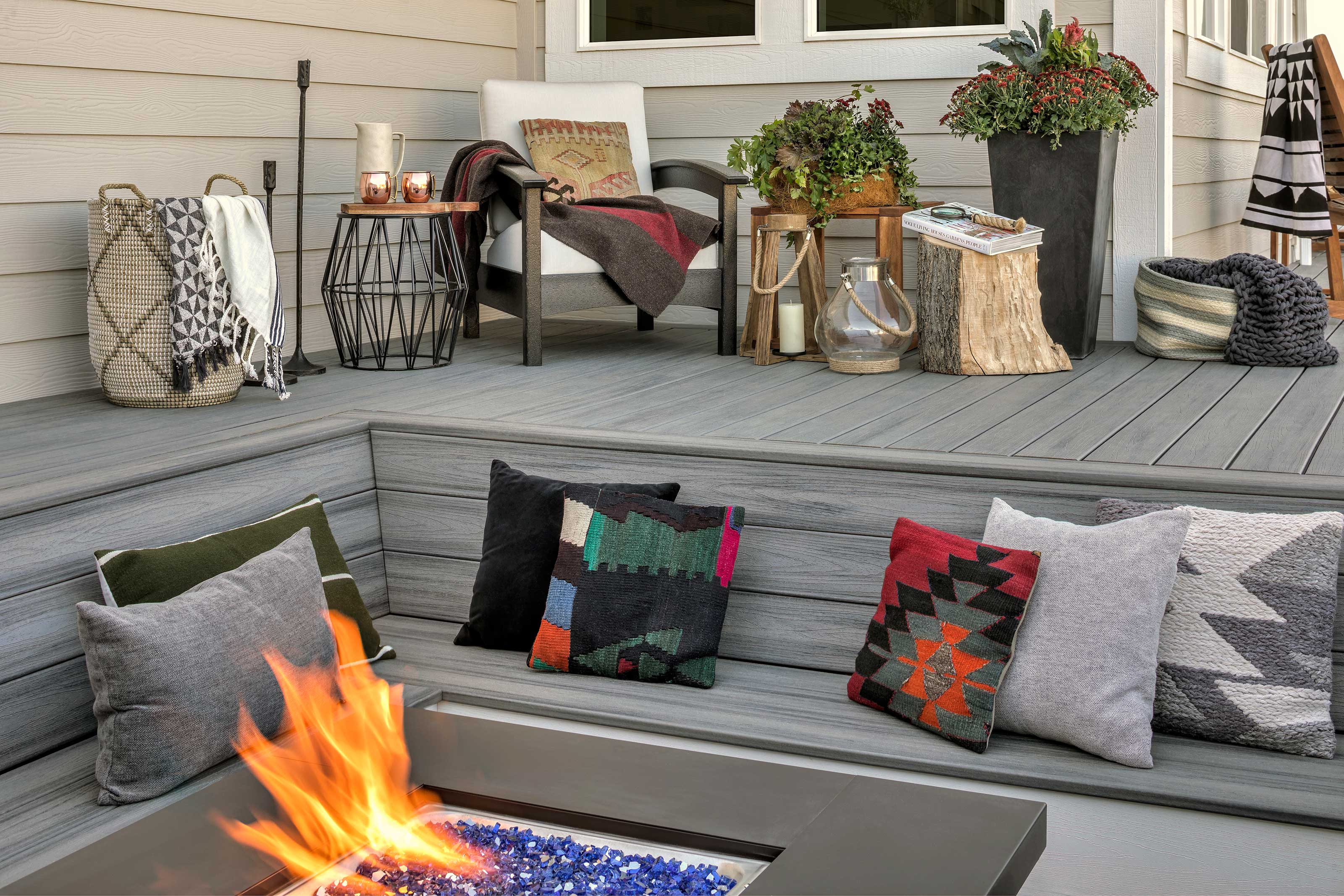
If you want help with your garden makeover, you could call in a designer to create a plan and use a contractor to carry out the work, or engage a company to design and build your new outdoor space. Happy to reimagine the space yourself? Call on a builder for the hard landscaping elements you don't want to DIY.
The costs of bringing in a pro can vary hugely. Expect to pay from around $9,700 (£7,000) with design, materials, planting and construction included; costs could be around $35,000 (£25,000) and up for a medium-sized garden.
The initial landscaping is usually the most costly part. Plan work for months outside of late autumn and winter, and planting for the first half of spring or autumn. Book up early – everyone else will be vying for these times of the year.
Our dedicated guides on how much does landscaping cost and how much does a garden designer cost are full of useful tips and advice, including what to expect, how much to budget for, and how to save money.
3. Think about landscaping materials
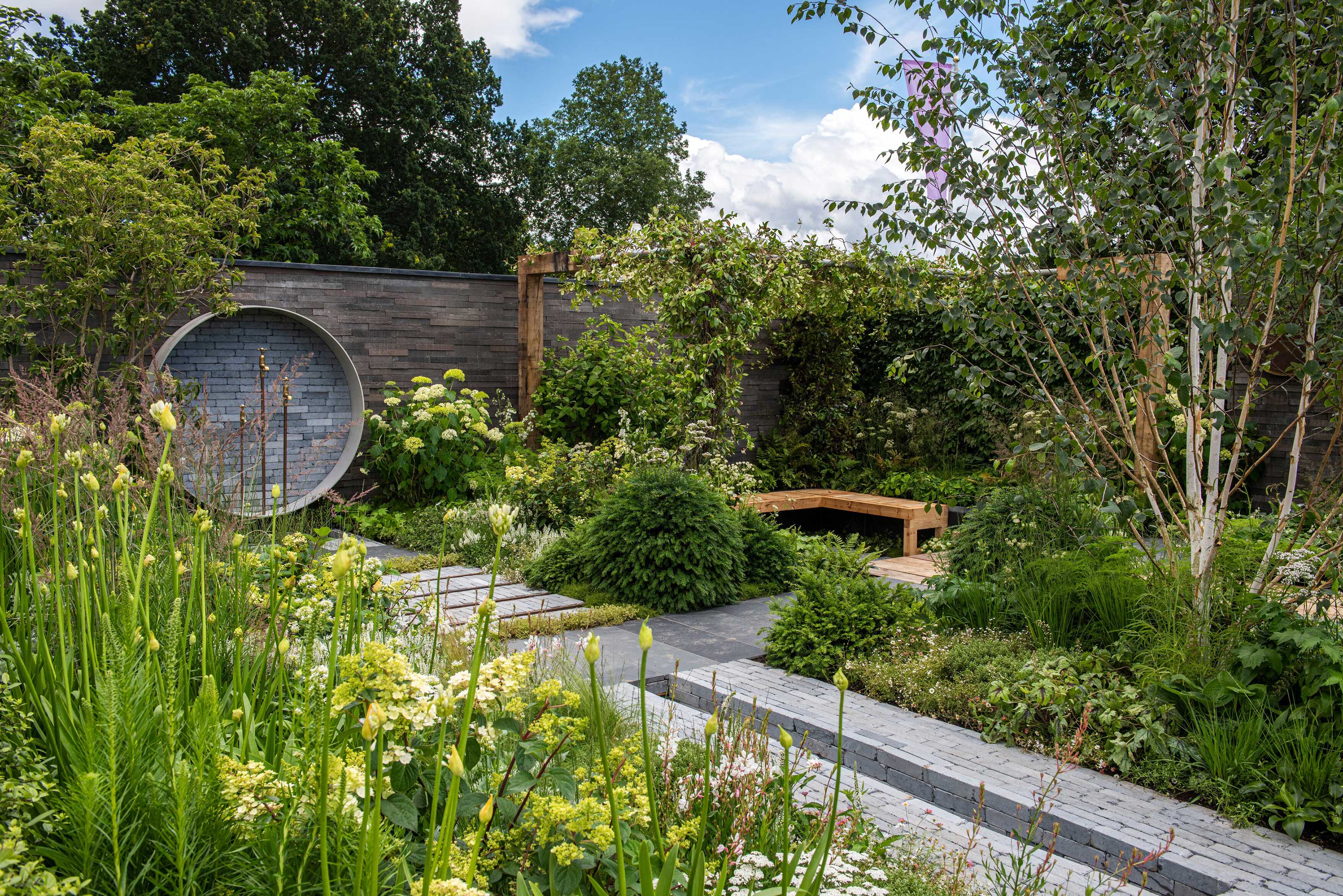
Hard landscaping like drainage and levelling, fencing and retaining walls, paving and decking ideas, and preparations for a lawn should all take place at the beginning of a garden makeover. The choices you make for the materials and the divisions between them will be led by the look you're after for your space, as well as the function of different zones, like cooking, dining, relaxing or partying.
Underfoot, sandstone (including Yorkstone) is a popular choice, or pick stones such as granite or limestone. If you're opting for the latter, be sure it will stand up to winter conditions. Alternatively, porcelain paving is tough and durable, and can create the appearance of wood or concrete. Our patio paving ideas feature is full of inspiration to help you pick the right style for you.
Consider the maintenance you'll need to undertake when you're choosing, and think about complementing your house and the planting with the color palette. How you lay paving also matters: random patterns with different sizes of slab create a more traditional effect, whereas a single slab size and a linear layout looks contemporary.
4. Grass: real or fake?
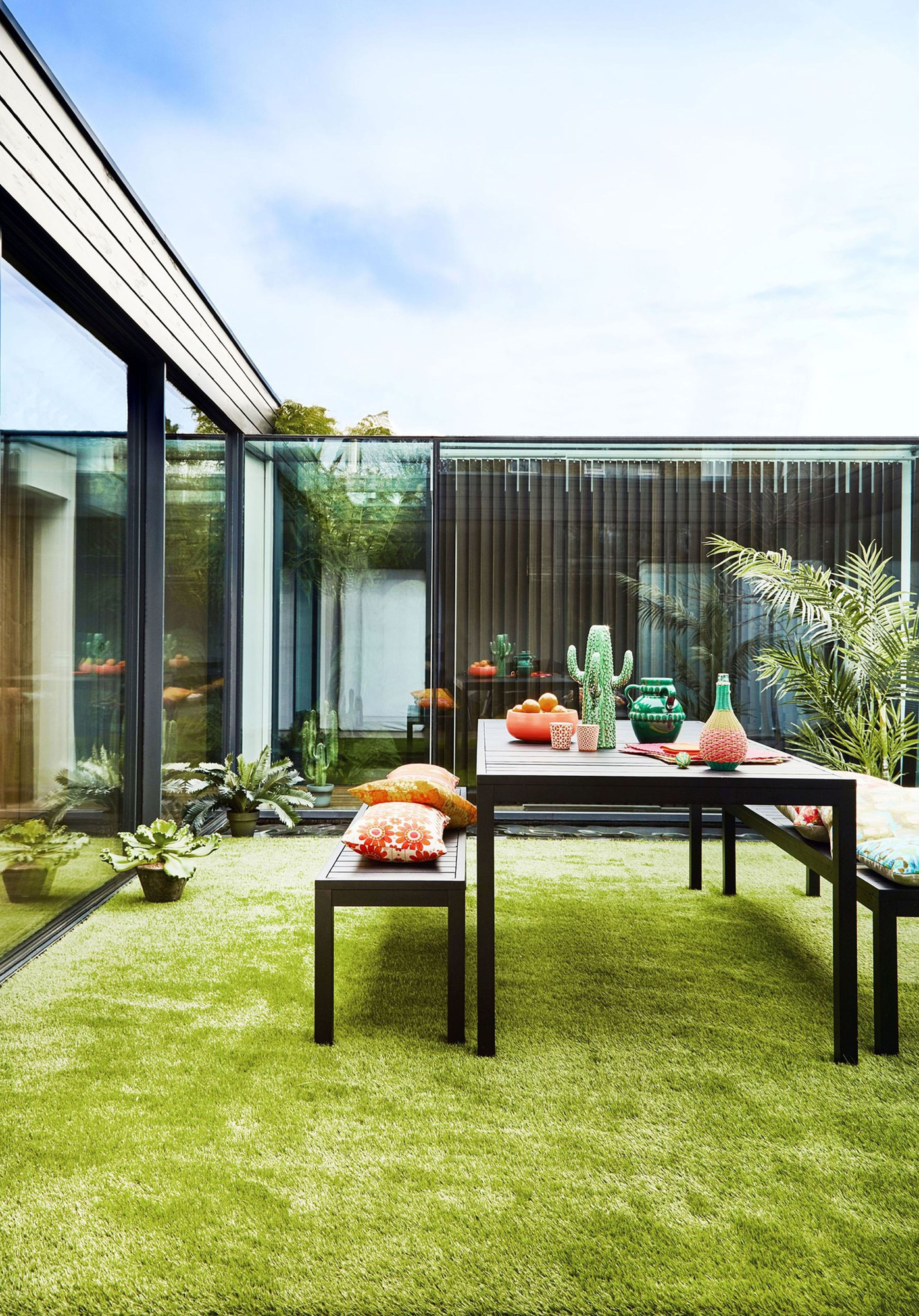
Want to incorporate lawn ideas into your garden design? Think about whether you want the authentic stuff or prefer artificial turf. While the designs of the past were easy to spot, today's versions are extremely realistic. You won't need storage space for a mower, meaning it can be a particularly good option for small garden ideas, and you can say goodbye to mud and parching, too. Artificial grass can also stand up to kids' games and the efforts of the dog to dig it up, so is ideal if you're planning a backyard for all the family to enjoy.
The downsides? It will cost you more to lay than genuine turf and it has a limited lifespan (from around seven to up to 20 years).
If you prefer real grass, you can choose from grass seed or turf rolls. Laying rolls of turf means a new lawn much faster than with grass seed, but you'll need to put them down within 24 hours of delivery. Turf can be laid from early autumn to early spring. Learning how to plant grass seed will save you money compared to turf, but you'll have to wait a little longer for your lawn – until June if you sow in autumn, or until late autumn if you sow in spring.
When you plan and create your lawn, decide on the other soft landscaping elements too – the shape of your flowerbeds and borders. Our guide to garden borders has plenty of inspiration.
5. Decide on decking
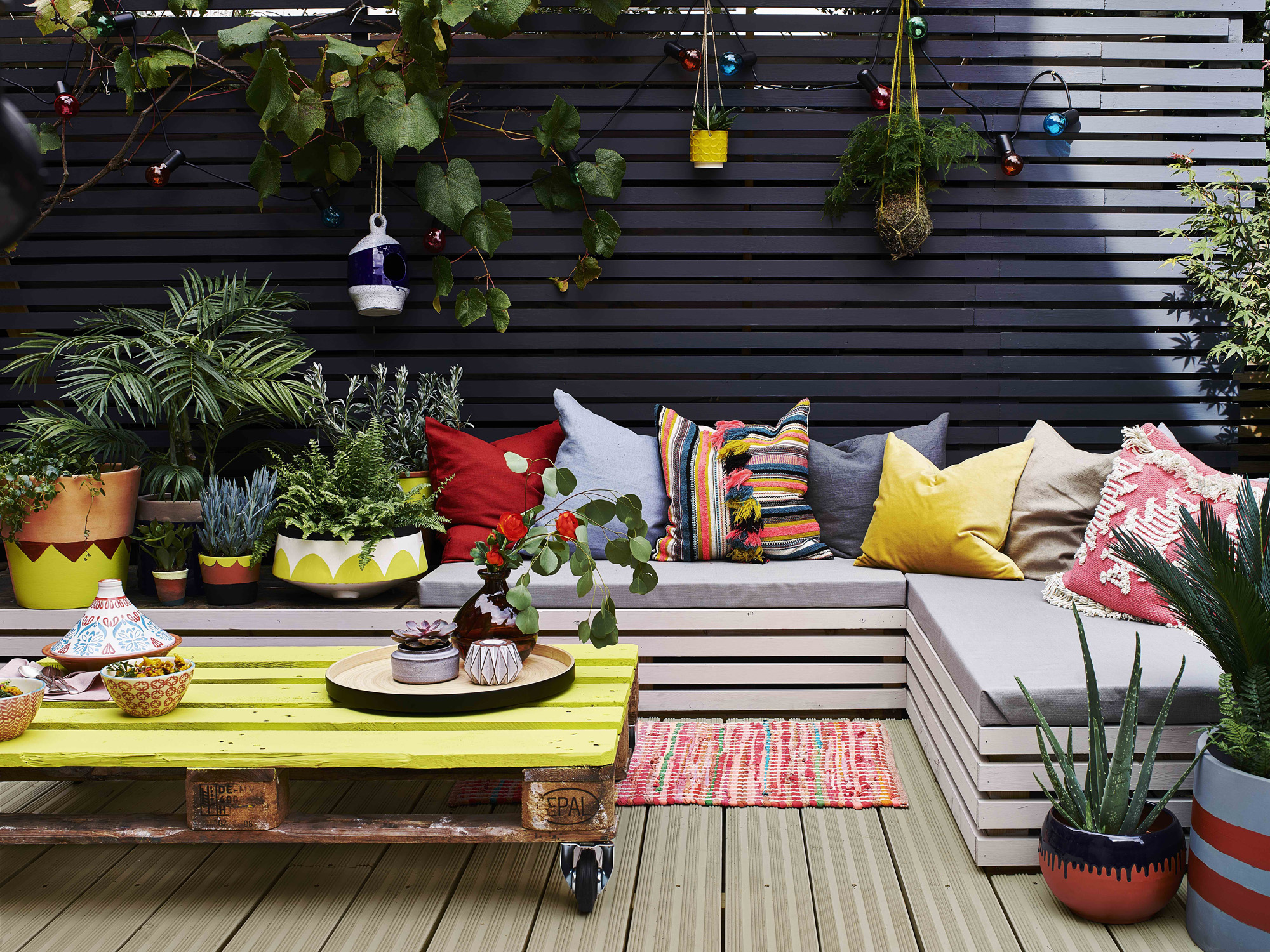
Decking can help zone a garden, providing areas for seating and dining, and create level areas within a sloping plot. The lowest cost option is to lay softwood boards; opt for pressure-treated timber, which gives the wood more durability and resistance to rot and other hazards that can reduce a deck's longevity. Hardwood decking is more costly but has a long life span and is resistant to rot and warping. Alternatively, the best composite decking, made with plastic and wood fibre, is durable and low maintenance.
If you live in a house in the UK, laying decking can fall into the permitted development (PD) regime, so you won't need planning permission to add it if you follow the rules: decking can be no more than 30cm above the ground and, together with extensions and outbuildings, must cover no more than 50% of the garden.
Check that there aren't other restrictions that apply to your house, though, and remember that flats and maisonettes don't have these PD allowances. Outside of the UK, as with any large outdoor builds, it's always best to check with your local planning authority before you start construction.
6. Create an outdoor kitchen
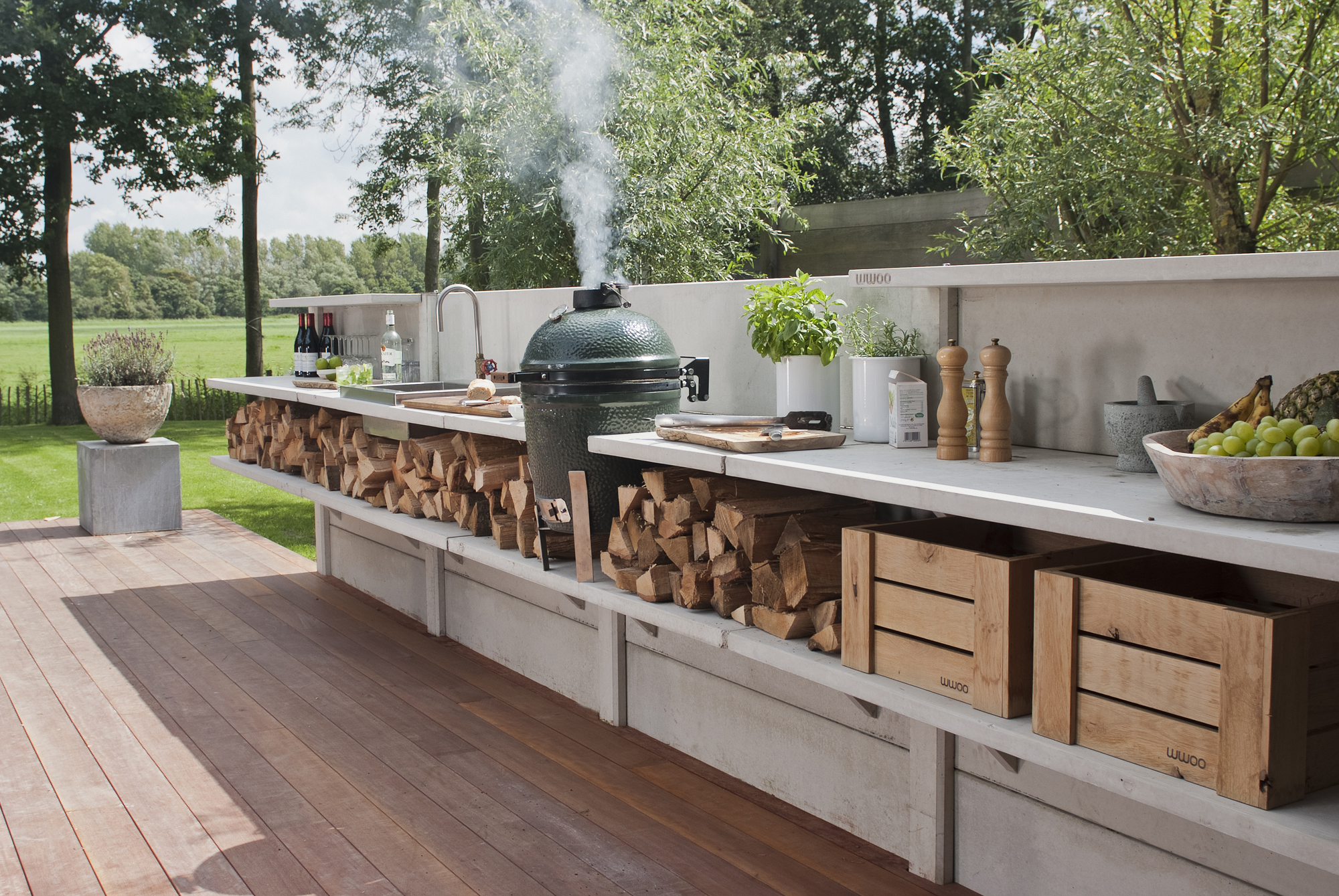
You might find a barbecue sufficient for alfresco food preparation, but consider upgrading to a full outdoor kitchen as part of your makeover. That way, you can prepare whole meals outside with guests around rather than splitting your time between indoors and out.
Your outdoor kitchen ideas could include an outdoor oven or a kamado for roasting, grilling or smoking. Burners will allow you to use saucepans. Think, too, about whether you want a sink, tap or fridge. The latter will need to be a model that's suitable for outdoor use. If you need water or electricity, these services will need to be run to the area as part of the initial garden work – remember to factor this into your budget.
Work surfaces create space for preparation and plating up and should be made of a weatherproof material – some stones, concrete, or an ultra-compact engineered surface could fit the bill. Storage for equipment avoids the trek back and forth to the house. Avoid decking underfoot in an outdoor kitchen area as food can fall between the boards. Choose non-porous paving in case of spills, and opt for slip resistance to make cooking safer.
7. Plan your planting to suit your space
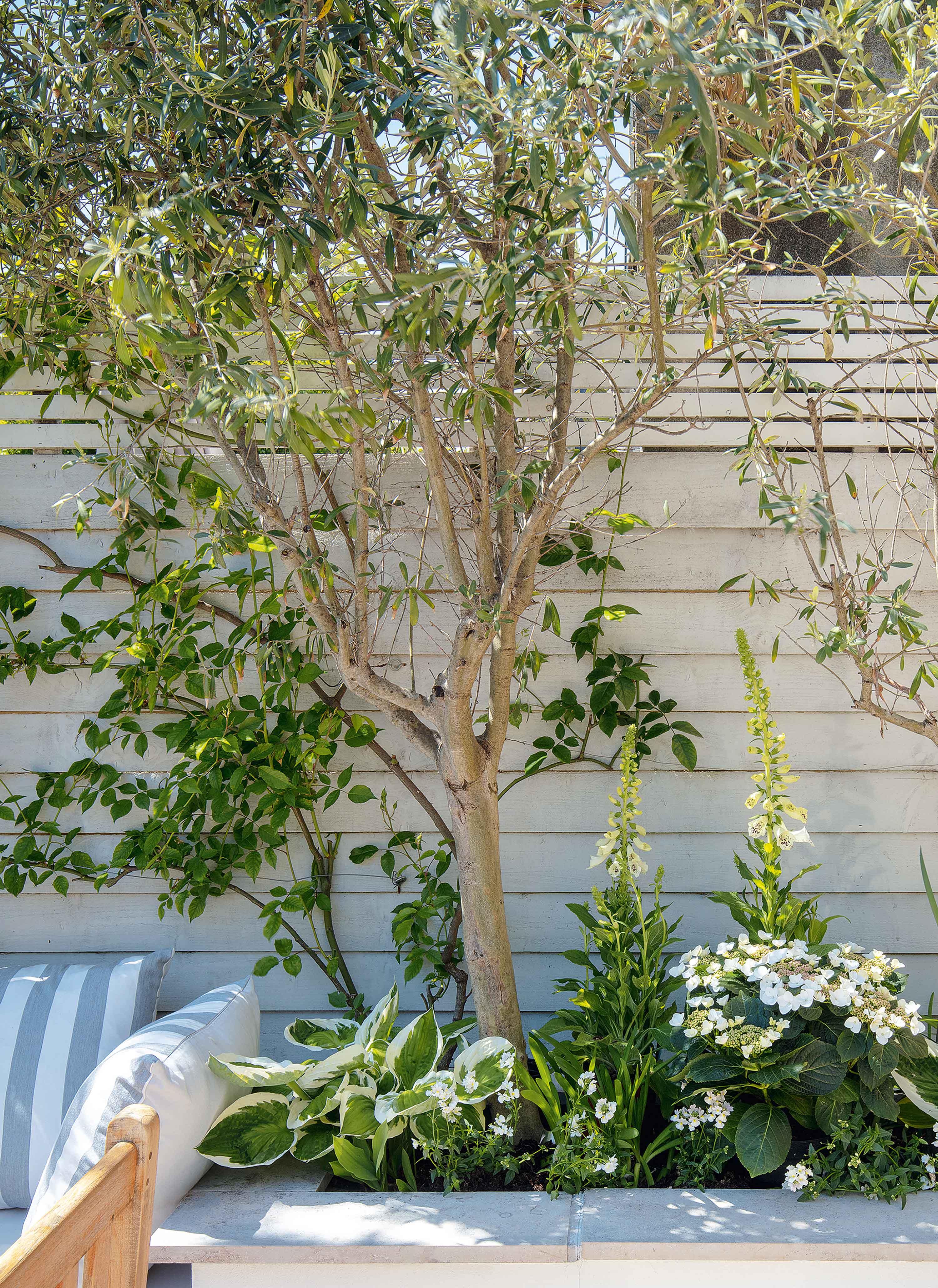
A garden doesn't have to be generously sized to pack a punch with its planting. But, you do need to decide from the outset how much of the area will be devoted to flowers and foliage, and what style you want. If you're a fan of cottage garden ideas, you may be after traditional borders, or perhaps plants that will attract wildlife. Alternatively, you might want to create an architectural effect with sizeable plants that create strong outlines. Think about whether you want to grow food for your table, too.
It's also important to pick plants that work with your garden, as says gardener and blogger Louise Findlay-Wilson of Bloominglucky.com. 'You can waste a lot of time, effort and money trying to grow things which just don't suit your garden's conditions,' she says. 'Know your plot and play to its strengths.'
Look at the soil conditions in your garden and choose plants accordingly. You should be able to see and feel the difference between gritty sandy soil, sticky-when-wet clay, spongy peat, and smooth silt and loam soils (although our guide to soil types will help you if you get stuck). Put a handful of soil in a jar of vinegar and, if it froths, it's chalky and alkaline. You can also pick up a test kit in a garden center to discover the pH of your soil.
It's also important to consider the orientation of your plot so you can think about which areas will be sunny and which shady at different times of the day. 'If your garden is full of shade, don't try to fight that by growing sun-loving plants. Accept the shade and make the most of it by growing plants which suit it,' says Louise. Our guides to the best shade loving plants (and the best drought tolerant plants) will come in handy.
8. Consider low-maintenance options
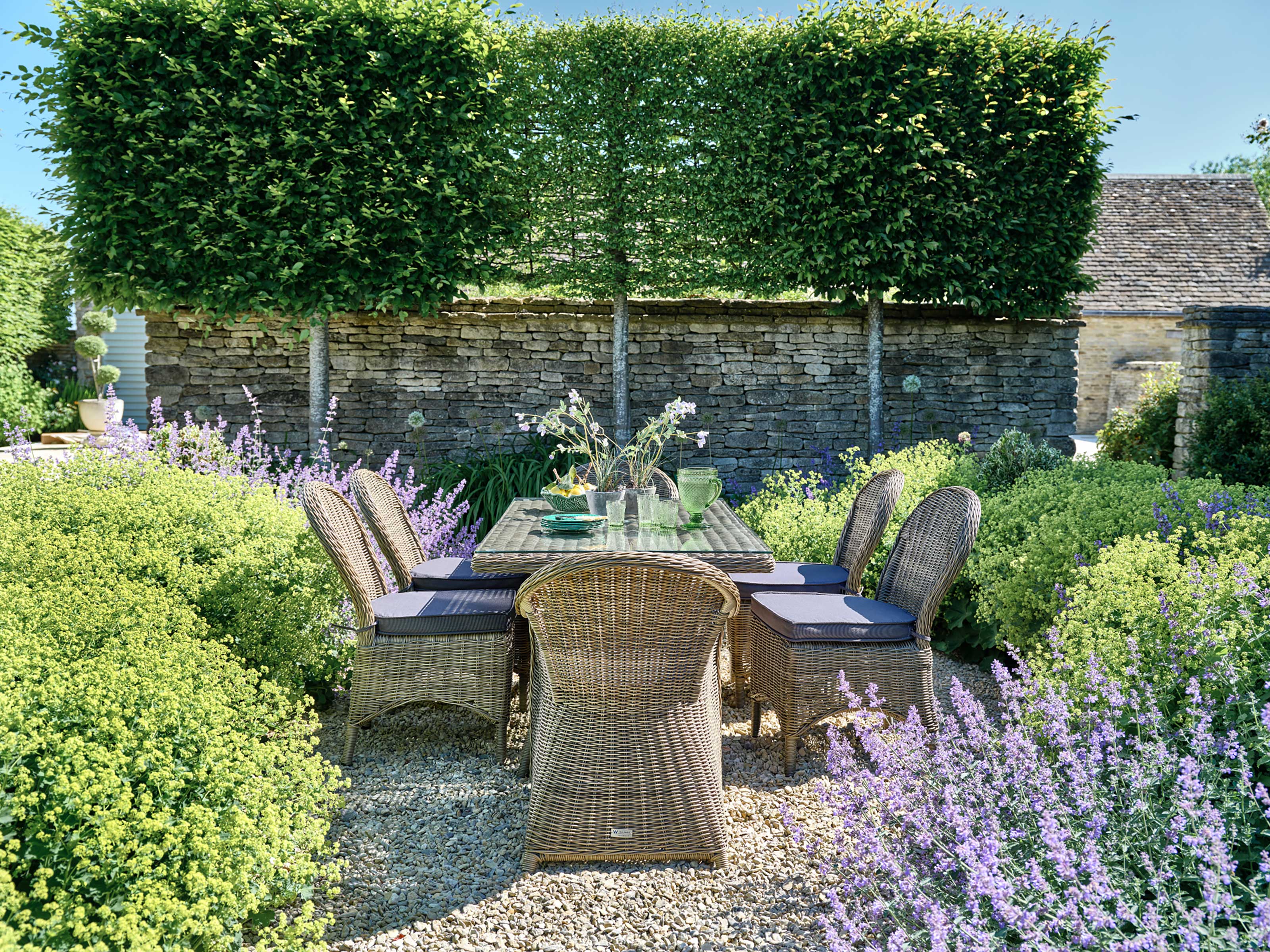
When you're considering the planting, factor in how much time maintenance will take. A successful makeover will create a garden you can keep on top of. For a lower-maintenance space, think hardy evergreen shrubs that don't take much work.
Incorporating strong structural elements such as paving or gravelled areas, paths, large planters and even sculptures will help give the space style and interest while keeping chores down, too. You'll find lots more low maintenance garden ideas in our feature.
9. Think about color
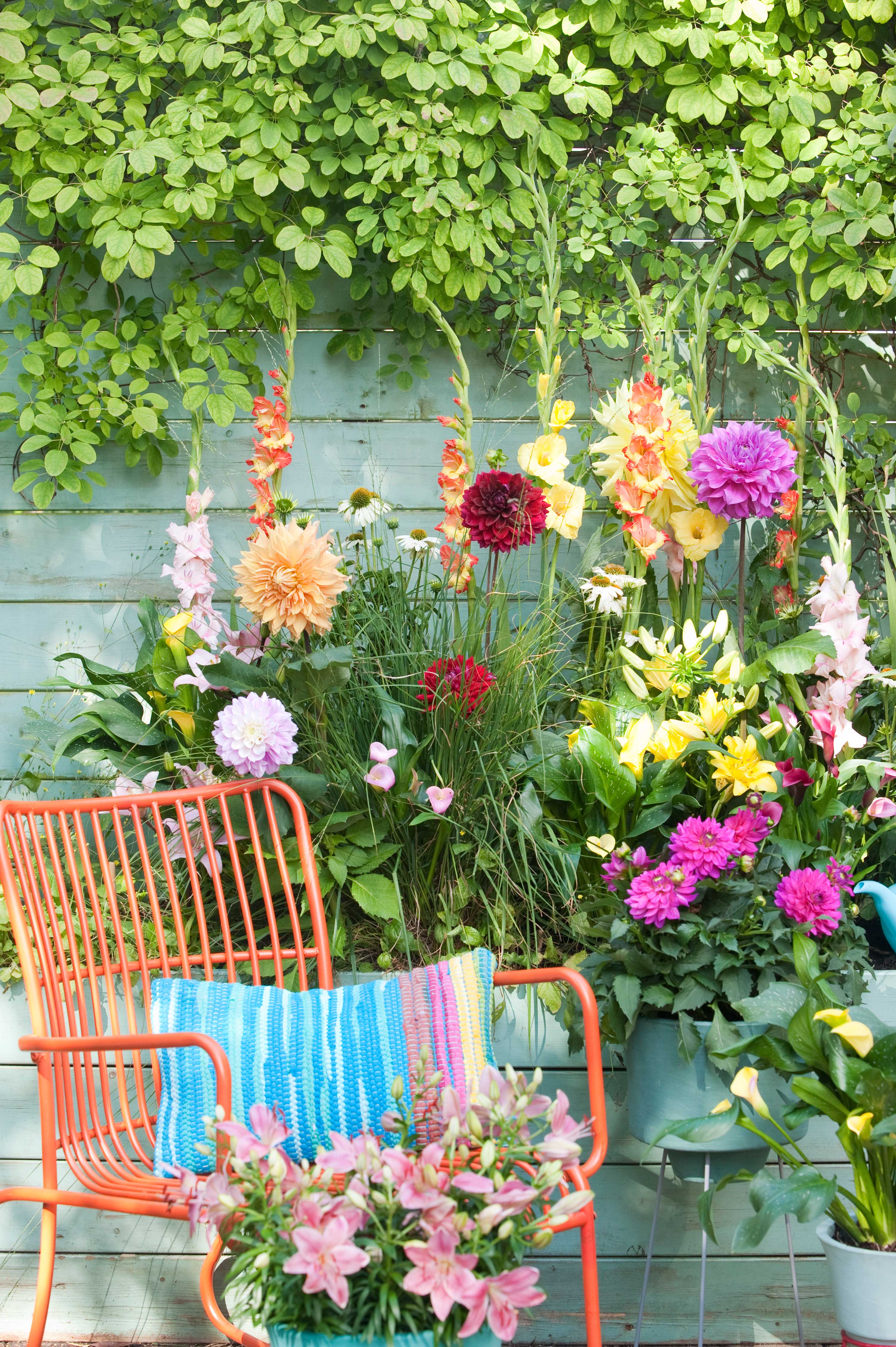
If you've already taken a look at our guide to garden color schemes, then you'll know how important they are for setting the mood of a space.
Some people prefer to just go with a particular color scheme for their planting: for example using hot shades or cooler tones. But don't forget about other features too – whether it be the throw cushions on your outdoor sofa to an exterior wall painted in a bold or gentle hue.
Going for a range of shades from a minimal palette can result in a cohesive and sophisticated feel, whilst monochrome is a reliable choice for a sense of modern-chic. There are no rules, however – if you love an eclectic mix that features all colors of the rainbow then allow your space to embrace it!
10. Pick your garden buildings and structures

How many garden storage ideas do you need in your plot? A shed for hand and power tools, plus the furniture you need to put away out of season, should be in the plan for your makeover from the start. If the space is small, you may be able to scale down to a mini shed or storage bench.
Garden buildings aren't just for storage though. A glazed summer-house-style structure is great for relaxing, hobbies or a play room. And there are designs that are a shed and summer house in one, so you don't need to double up on buildings to get a seating area plus storage. Alternatively, if you love to grow your own crops, greenhouse ideas might be the way forward. Or if you fancy a tucked-away retreat to indulge in a bit of peace and quiet, then she shed ideas might be for you.
Vertical structures such as walls, fences, screens, pergolas and arbors are also important to a garden design, as they balance the horizontals of the space. They can also help distinguish the different zones of the design, provide privacy and shelter, and create an opportunity to grow climbers. What's more, vertical elements can also make a small garden feel bigger by delivering different areas to view and explore, rather than letting the eye take in the entire space in one go. They're also handy for hiding unsightly essentials like the wheelie bins, or concealing a less than lovely view beyond the garden.
11. Work with the sun
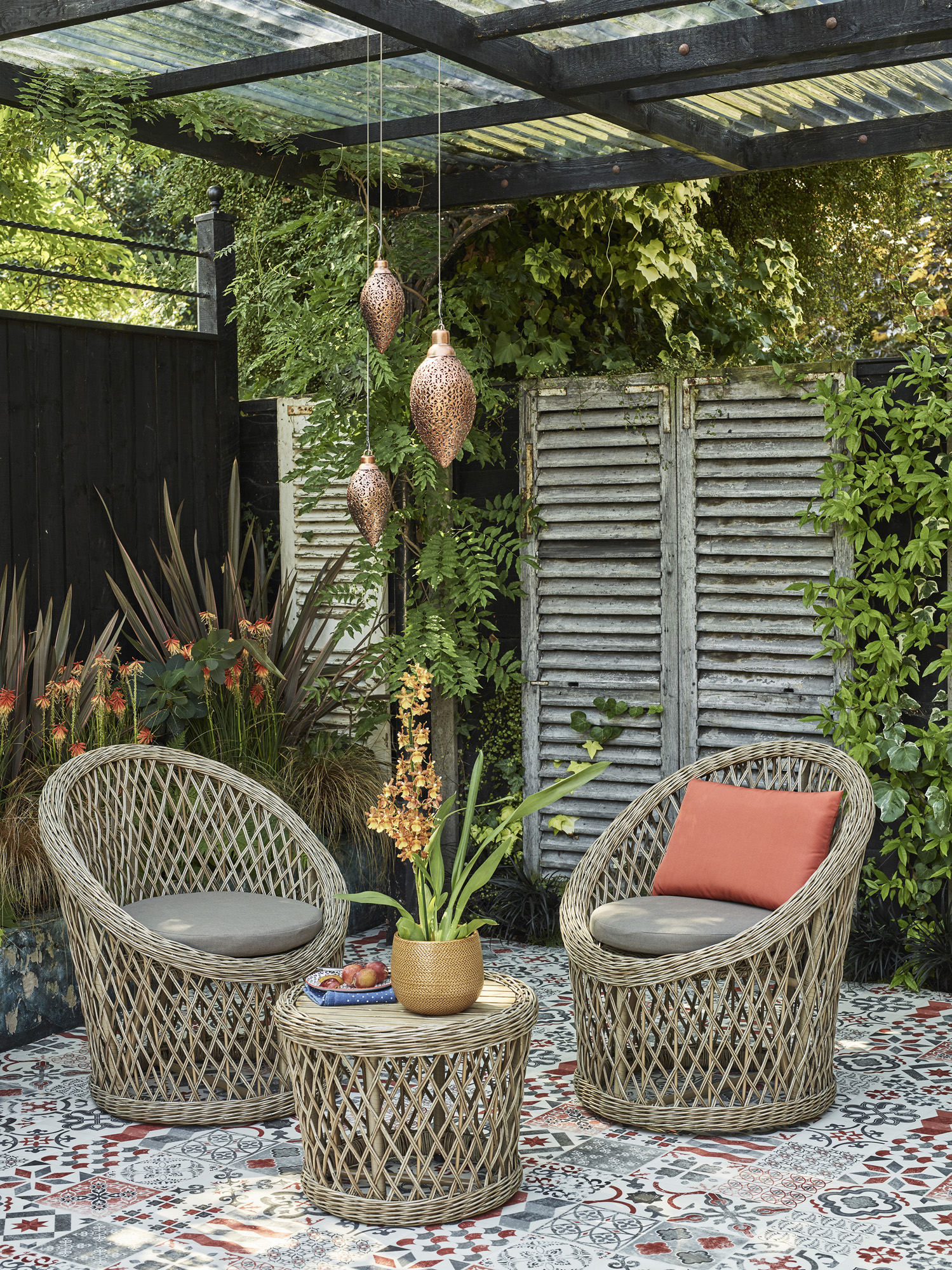
The way your garden faces is an important consideration when you're planning outdoor seating and dining areas. A patio area outside the house may need shading if it's to be functional all day long, and pergola ideas with shade-creating climbers or an awning could keep it comfortable at different hours.
You might want to plan two or more seating or dining areas to accommodate the movement of the sun. For example, the terrace at the back of the house in an east-facing garden could be the perfect spot to enjoy a sunny breakfast or morning coffee, but you might want to sit or dine at the end of your plot later in the day when the area by the house is in shade. North-facing gardens are the trickiest as there's shade for most of the day. On the upside, from May to October – when you'll want to spend time outside – you can enjoy evening sun.
If your garden faces south, you'll likely want to design areas of shade into it as there will be little naturally. Trees and tall hedges, as well as elements like the best garden parasols, are your allies.
12. Design your lighting scheme

Whether you want to eat alfresco in the evenings or you like the idea of overlooking your plot after dark, it's good to plan outdoor lighting ideas early on in your garden design plans.
Choose the key features you want to highlight and use darkness to conceal the areas you don't. Illuminate paths, steps and other circulation areas using wall-mounted pillar up or downlights or wall lanterns. Cooking areas will need task lighting so you can prepare and cook safely.
Lighting and cabling must be designed for exterior use. Lighting fixed to the outside of your house is subject to building regulations, and you need to use an installer registered with a competent person scheme or get building control approval.
13. Connect up your zones with pathways

Garden path ideas are crucial when planning your backyard. They'll allow you to move around the space from zone to zone, and keep everyone off the grass when it's frosty or wet. Just as you'd pick the base for your outdoor living spaces, you can opt for all sorts when it comes to paths – from gravel and decking to pavers or cobbles. But as well as the material, think carefully about their arrangement.
'All too often you see gardens with straight paths down the middle, dividing up the space,' says garden blogger Louise Findlay-Wilson. 'This takes the eye straight to the end of the garden, making the garden appear smaller.
'Allow paths to meander and the plants to cut into the garden,' Louise continues. 'That way your garden will look more interesting and the visitor will be taken on a slower journey through your space. They will be prompted to pause, look at and enjoy the garden you've created.'
And if you're working with a small garden design? 'Don't try to maximize space by making your flowerbeds and paths as narrow as possible,' Louise adds. 'It's a false economy! Your garden will look more interesting and the space will look bigger if you're generous with your borders and paths.'
14. Link indoors and out

If you're building a rear extension, it can be the perfect time to tackle your plot as well. But even if you're not, blurring the boundary between outdoors and in creates the illusion that both spaces are bigger than their actual dimensions.
One trick is to lay your patio ideas or terrace in a material that matches the interior flooring, especially if you have bi-fold or sliding doors that create a wide opening. Team wooden flooring with decking outside, or lay similar tiles – but make sure they're suitable for exterior conditions, including being slip-proof when wet.
The two spaces could also be linked with color, with interior and exterior walls in the same hue, or by bringing exposed brick into the house. Planning an outdoor kitchen? Link its run of units with a kitchen run inside so they have a seamless feel. Even simpler is to introduce greenery where house and garden meet with raised planters at window level.
15. Meet everybody's needs
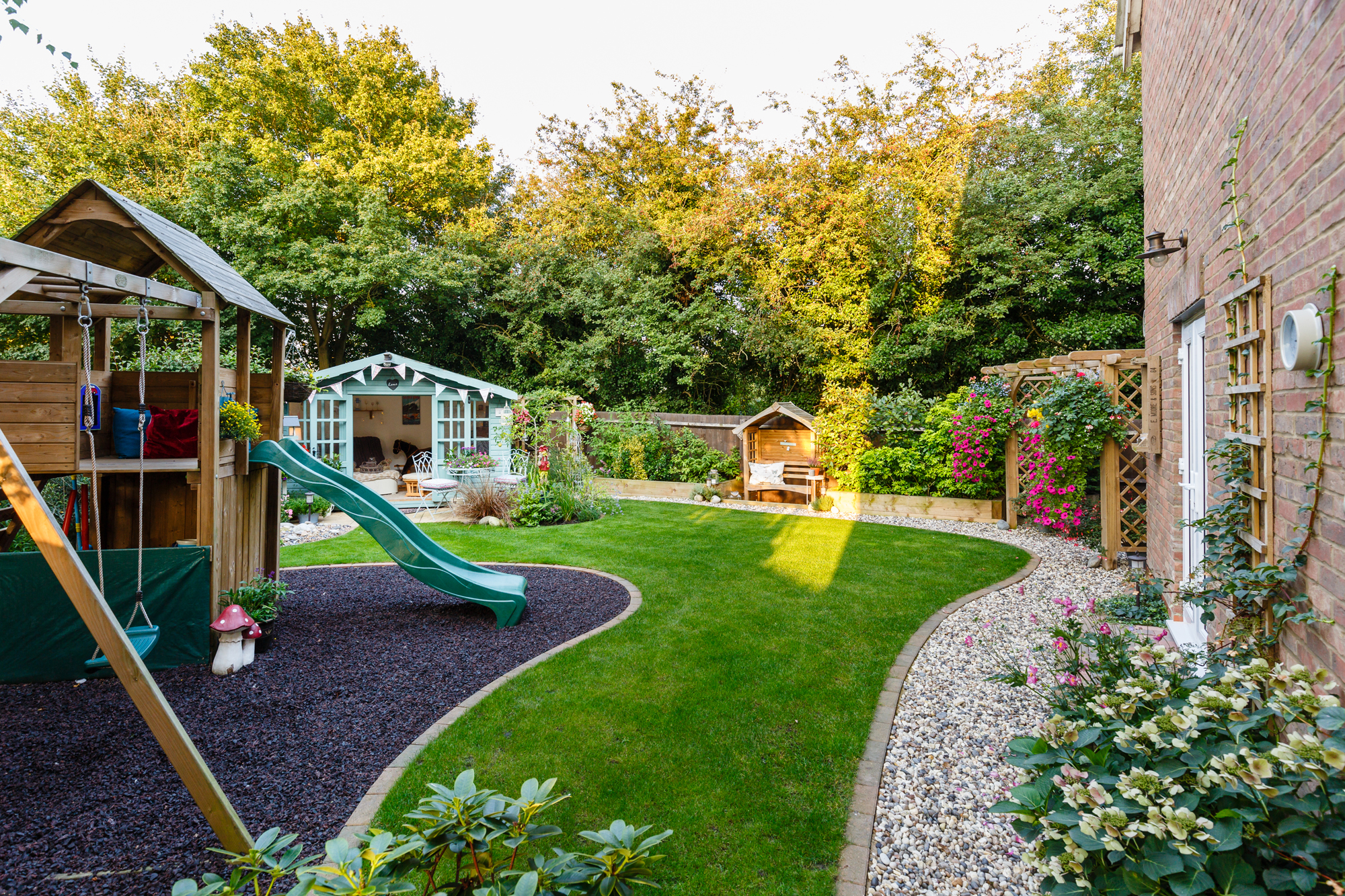
Need a child-friendly garden? Think about creating zones to separate play and seating areas, and pay attention to the surfaces you lay. You might want an area with grass for ball games, or bark chips or another forgiving surface for areas with sizeable climbing equipment, for example. Separate zones with low dividers to keep activities apart without blocking the views that allow you to keep an eye out.
Think about what's in your planting plan for a child-friendly garden, too. With many plants, issues arise if they're ingested, and some have sap that can irritate the skin – for example, euphorbia and – vegetable growers should note – parsnips. Also, consider which areas are likely to be hit with footballs and other objects, and stick to tough planting for these borders.
Finally, be safety conscious if you're including garden pond ideas or water features – even shallow water can be a hazard for children. Our guide on how to design a child-friendly garden has more tips.
Does a garden need a theme?
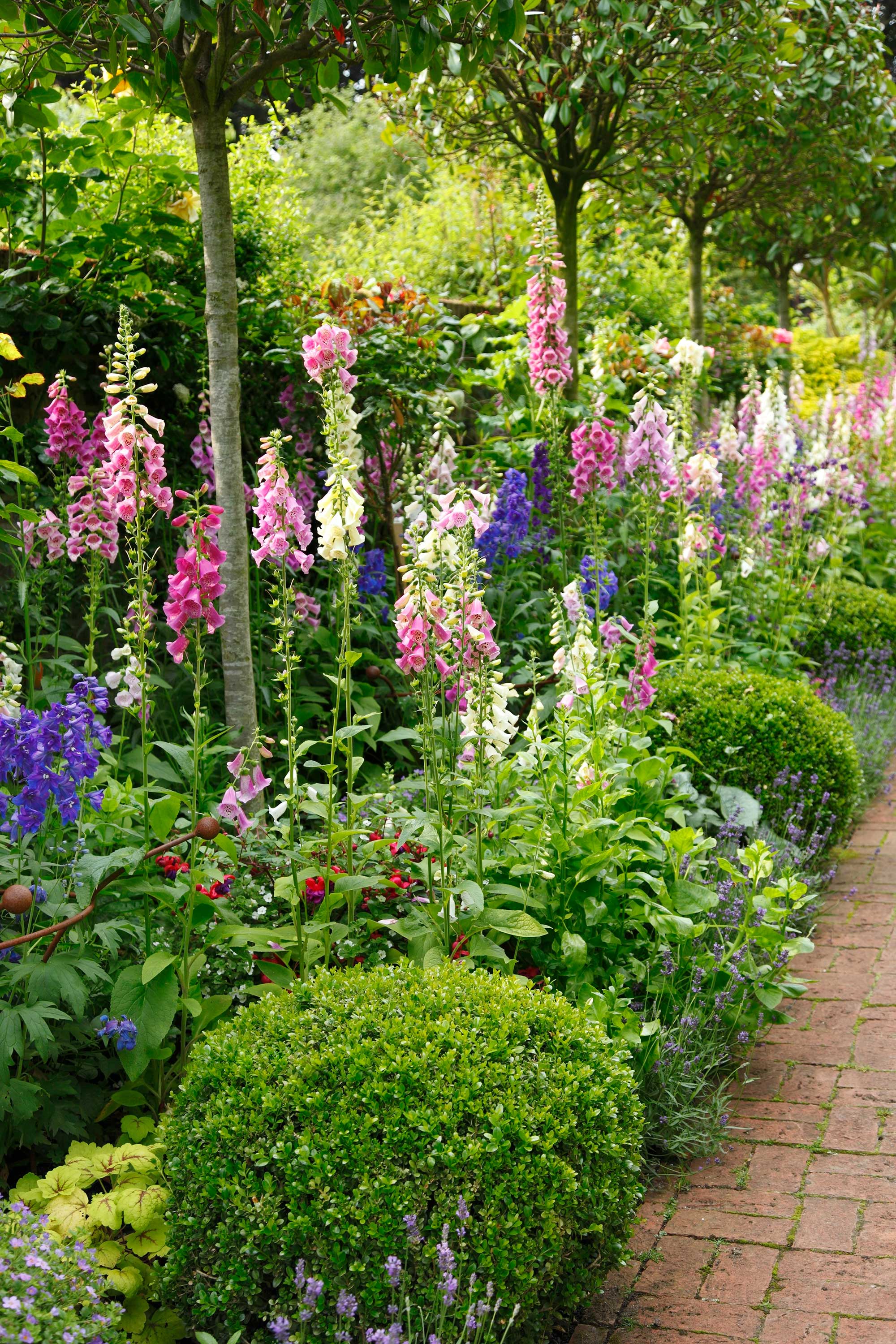
Just like we mentioned earlier in regards to color, there are no hard and fast rules when choosing your theme for your garden design. You might not even want to settle on a specific style at all. However, often picking a theme can be helpful in narrowing down your options and creating a cohesive and harmonious space.
Popular themes include the classic cottage style – ideal for lovers of flowers, pastel shades, vintage decor and a relaxed look. On the other hand, a pared-down, contemporary look with low-maintenance planting and plenty of smooth surfaces (think metal, porcelain and concrete) is perfect for busy urban dwellers who want a space that feels undeniably current.
Other looks include nautical (think decking, rope features and blue-and-white textiles), tropical (architectural planting, plenty of bright hues), and Scandinavian-chic (think white, wood, and minimal). There are bohemian garden ideas and Mediterranean garden ideas to consider, too.

Sarah is a freelance journalist and editor writing for websites, national newspapers, and magazines. She’s spent most of her journalistic career specialising in homes and gardens and loves investigating the benefits, costs and practicalities of home improvement. It's no big surprise that she likes to put what she writes about into practice, and is a serial house revamper.
